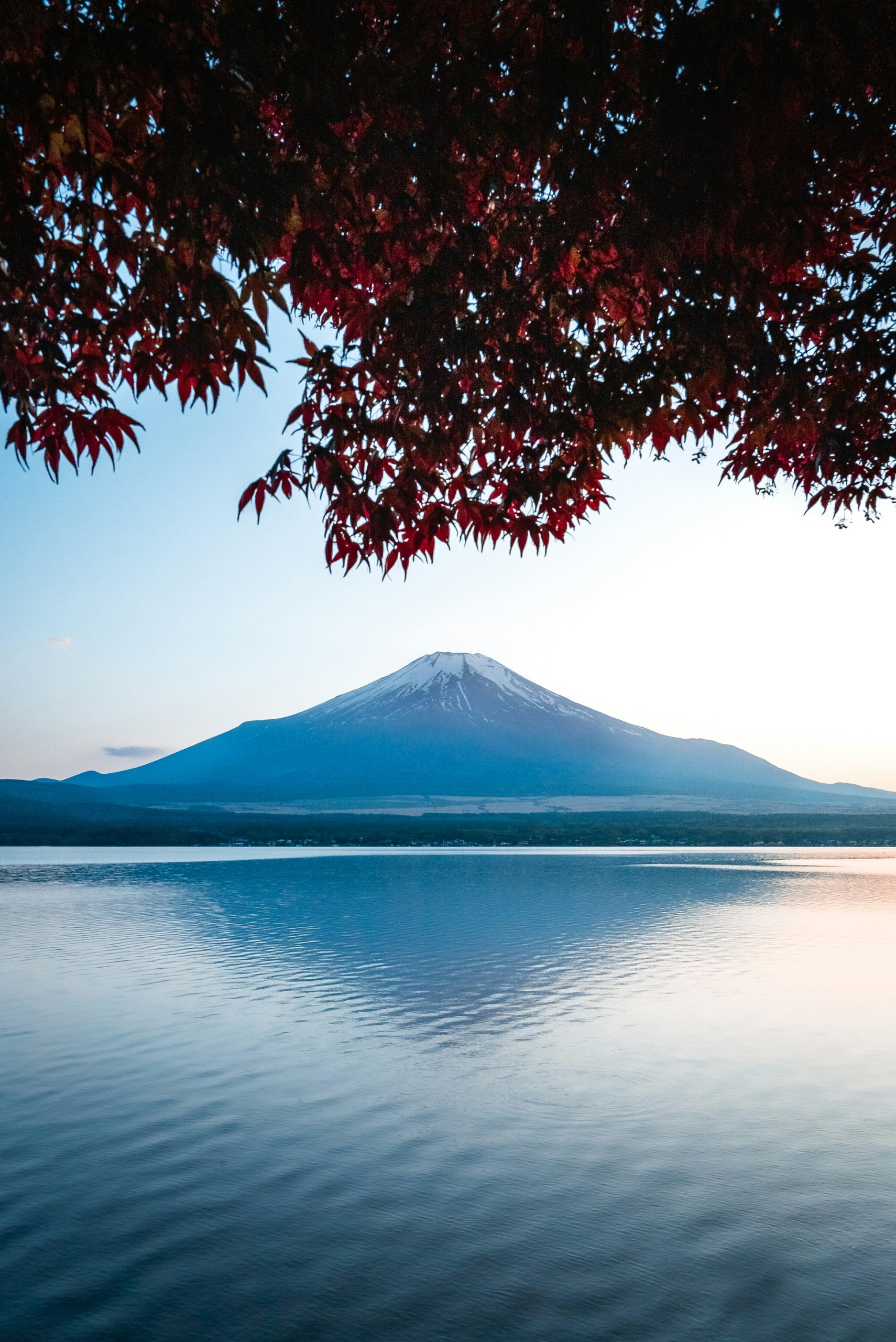Mount Fuji (富士山, Fujisan) stands at 3,776 meters as Japan’s highest mountain. This nearly perfectly shaped volcano has been worshiped as a sacred mountain and experienced great popularity among artists and ordinary people throughout centuries.
Mount Fuji is an active volcano, which most recently erupted in 1707. It stands on the border between Yamanashi and Shizuoka prefectures and can be seen from Tokyo and Yokohama on clear days. The volcano formed approximately 100,000 years ago, and its eruption in 1707 lasted for 16 days, with volcanic ash reaching as far as Tokyo.
Best Viewing Locations
Clouds and poor visibility often block the view of Mount Fuji, and visitors have to consider themselves lucky if they get a clear view of the mountain. Visibility tends to be better during the colder seasons of the year than in summer, and in the early morning and late evening hours than during the middle of the day.
From the Shinkansen
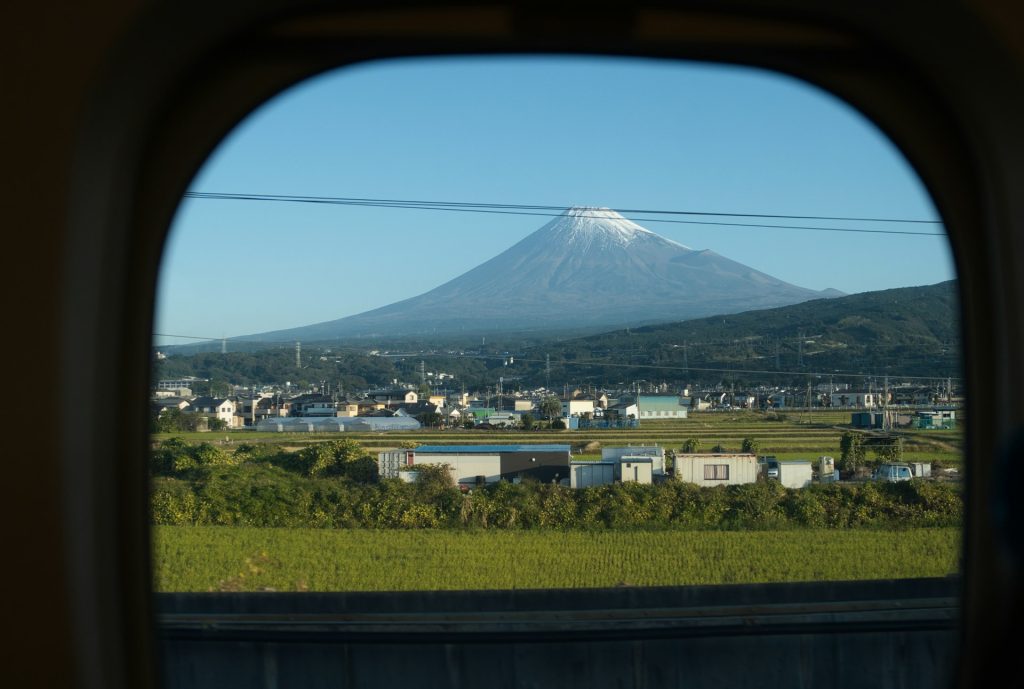
Another easy way to view Mount Fuji is from the train on a trip between Tokyo and Osaka. If you take the Tokaido Shinkansen from Tokyo in the direction of Nagoya, Kyoto and Osaka, the best view of the mountain can be enjoyed from around Shin-Fuji Station on the right hand side of the train, about 40-45 minutes into the journey.
From Nearby Areas
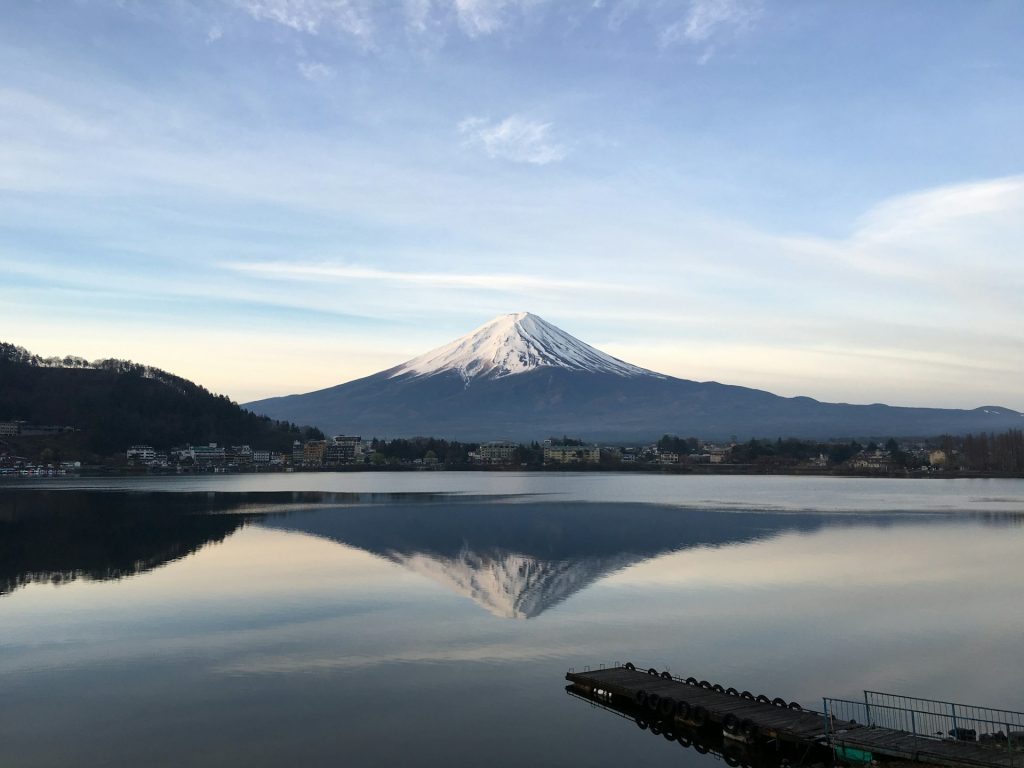
If you want to enjoy Mount Fuji at a more leisurely pace and from a nice natural surrounding, you should head to the Fuji Five Lake (Fujigoko) region at the northern foot of the mountain, or to Hakone, a nearby hot spring resort. These areas offer spectacular views of the mountain alongside recreational activities.
Spiritual Significance
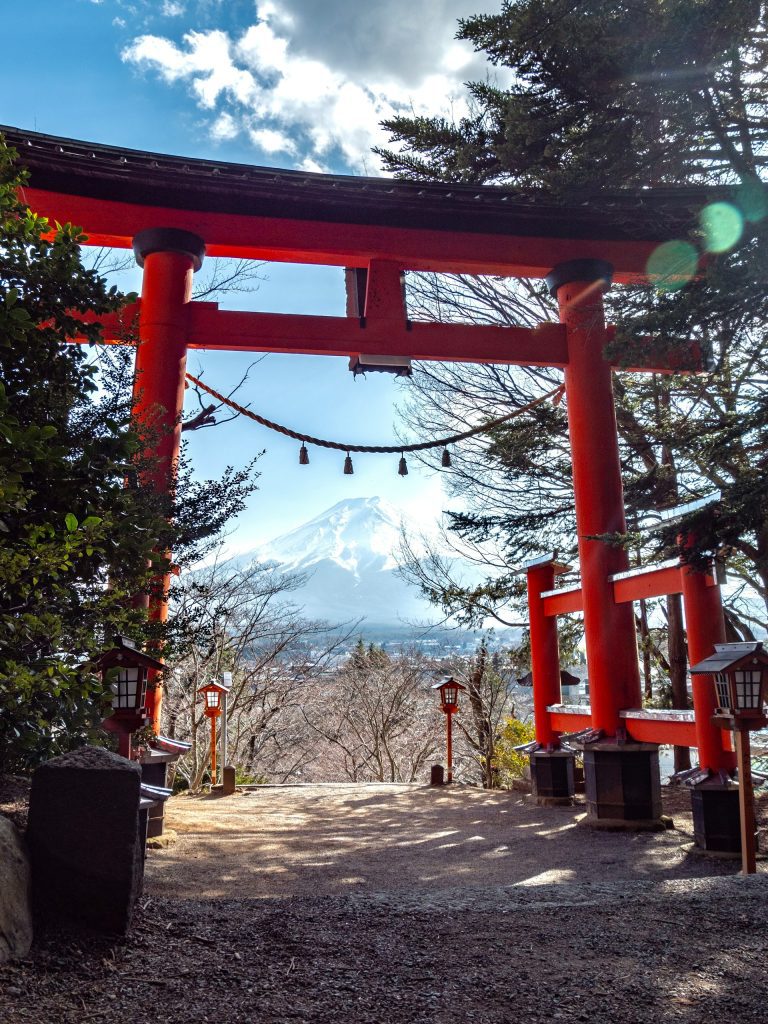
Over the centuries, the Japanese have forged a spiritual bond with the mountain. Legend has it that notable religious ascetic Hasegawa Kakugyo (1541–1646) summited the mountain over 100 times. His feats led to the formation of Fuji-ko, a group of likeminded Mount Fuji worshippers. The sect built shrines, created rock monuments, and fasted to show their dedication. The numerous Sengen shrines at the base of the mountain stand as testament to Fuji’s spiritual significance.
Cultural Impact

Mount Fuji’s iconic image became globally famous during the Edo period (1603-1867). Woodblock print artists Katsushika Hokusai and Utagawa Hiroshige created a series of pieces depicting the mountain from various vantage points. These works influenced Western artists like Vincent Van Gogh and composer Claude Debussy, cementing Fuji’s status as a cultural icon. Today, the mountain’s image appears on Japanese banknotes and countless tourism materials.
Climbing Mount Fuji
Mount Fuji is officially open for climbing during July and August via several routes. Between 200,000 and 300,000 people climb Mount Fuji every summer. Many climbers begin their climb the previous day and stay overnight at a lodge on the mountain, then start climbing early the next morning to watch the sunrise over the horizon, a phenomenon known as “goraiko” (来光).
Starting Points
The most popular starting points are the various 5th Stations situated at different heights around the mountain:
- Fuji Subaru Line 5th Station (most popular, eastern slope, 2,305 meters)
- Fujinomiya 5th Station (southern slope, 2,400 meters)
- Gotemba 5th Station (lowest of the 5th stations, 1,440 meters)
Surrounding Attractions
The area surrounding Mount Fuji offers numerous attractions for visitors who may not wish to climb the mountain.
Lake Kawaguchi

Lake Kawaguchi (河口湖, Kawaguchiko) is the most accessible of the Fuji Five Lakes and serves as a popular base for tourists exploring the Mount Fuji region. The lake offers some of the most spectacular views of Mount Fuji, especially from its northern shores. Around the lake, visitors can find the Kawaguchiko Music Forest Museum, Kubota Itchiku Art Museum, and the Kachi Kachi Ropeway, which provides panoramic views of the lake and Mount Fuji from its observation deck. Cherry blossoms in spring and colorful foliage in autumn make this area particularly attractive for seasonal visits. Boat rides on the lake are available, providing another perspective of Mount Fuji’s reflection on clear days.
Aokigahara Forest

Aokigahara Forest (青木ヶ原樹海, Aokigahara Jukai), also known as the Sea of Trees, lies at the northwestern base of Mount Fuji. This dense forest grew on hardened lava that flowed from Mount Fuji during its 864 CE eruption. The forest is known for its distinct features—remarkably little wind reaches the interior, sounds are absorbed by the dense foliage and volcanic rock, and conventional compasses may malfunction due to magnetic anomalies from the volcanic soil. Aokigahara contains several limestone caves including the Fugaku Wind Cave and Narusawa Ice Cave, which maintain low temperatures year-round. Well-marked trails allow visitors to safely explore this unique ecosystem, which hosts various plant species that have adapted to the volcanic environment.
Fuji-Q Highland amusement park
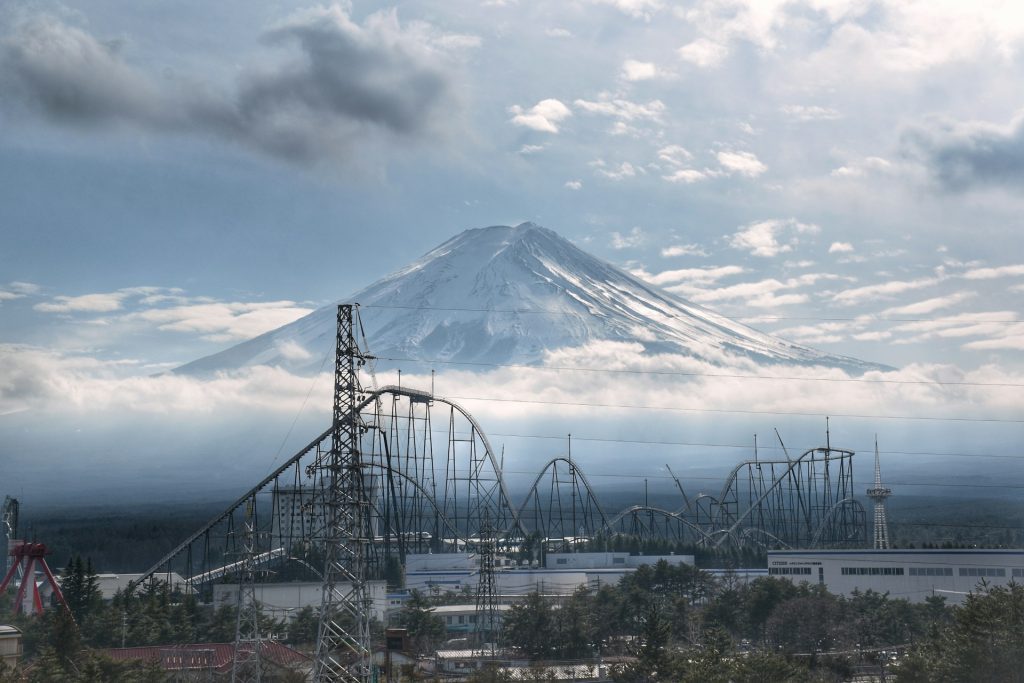
Fuji-Q Highland (富士急ハイランド) is a major amusement park situated at the base of Mount Fuji in Fujiyoshida city. The park is famous for its record-breaking roller coasters, including Fujiyama (once the world’s tallest roller coaster), Dodonpa (featuring one of the fastest accelerations), Eejanaika (a 4th dimension coaster), and Takabisha (with one of the steepest drops in the world at 121 degrees). Beyond thrill rides, the park features attractions based on popular anime series, a haunted hospital attraction called Super Scary Labyrinth of Fear, and Thomas Land for younger visitors. On clear days, many of the rides offer spectacular views of Mount Fuji, adding to the unique experience of this amusement park.
Hot springs (Onesen)
The Mount Fuji region is dotted with numerous hot springs (温泉, onsen) that utilize the volcanic activity beneath the surface. Hakone, located to the southeast of Mount Fuji, is particularly renowned for its diverse hot spring baths. Visitors can experience various types of baths including outdoor baths (rotenburo) with views of Mount Fuji, sulfur springs with therapeutic properties, and traditional Japanese bath houses. The town of Fujikawaguchiko also offers several hot spring facilities where visitors can rest their tired muscles after hiking or sightseeing. Many ryokan (traditional Japanese inns) in the region feature private or public hot spring baths, allowing guests to experience this essential aspect of Japanese culture while enjoying views of the iconic mountain. The mineral-rich waters are believed to have healing properties for various ailments, from skin conditions to rheumatism.
Mount Fuji represents the perfect harmony of natural wonder, spiritual significance, and cultural heritage—a symbol of Japan that continues to captivate visitors from around the world.
For those planning to visit, the climbing season runs from early July to mid-September, when mountain huts are open and weather conditions are most favorable. Weather on the mountain can change rapidly, so visitors should come prepared with appropriate clothing and equipment. Direct buses run from Tokyo’s Shinjuku Station to the various 5th Stations, making access relatively convenient for tourists.

